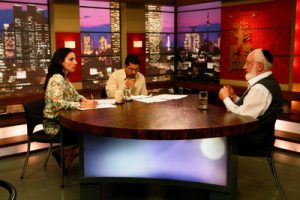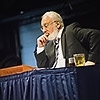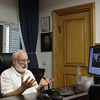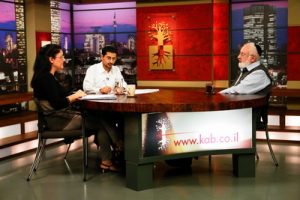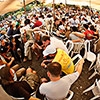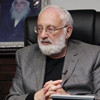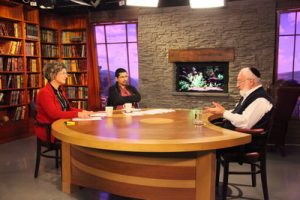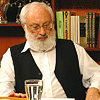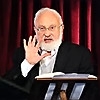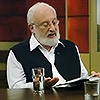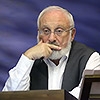 The substance of creation is the desire to enjoy, and all our work is to clothe it in the intention to bestow, the love of the neighbor. The intention matters most because it testifies to the essence of the action. The point is not whether I receive or bestow, but what I expect from this action: to receive or to bestow? It is what determines everything.
The substance of creation is the desire to enjoy, and all our work is to clothe it in the intention to bestow, the love of the neighbor. The intention matters most because it testifies to the essence of the action. The point is not whether I receive or bestow, but what I expect from this action: to receive or to bestow? It is what determines everything.
If an alien landed on Earth and saw how a person works hard all day long and at the end of the day gives all the money he earned to a salesperson in a store or a cashier in a bank, he would be fascinated: “What an act of bestowal!” But we understand why he bestows, then he receives something else more valuable for him.
It turns out that the action itself says nothing and everything is determined by the intention. This is the difference between an animal and a human being: the animal understands only the action itself. It is impossible to talk with it about intention, although it is possible to train an animal and to explain a little about the intentions of the owner to it, with the help of actions. But by and large, an animal understands only the action: if you give, you are good, if you do not give, you are bad.
A person acts with an intention, and this is different from animals. We are animals by nature, but the more we rise above the animal level due to education and acquired habits, the more importance we attach to intention. All fiction, cinema, and high art speak about intentions, not about the actions themselves. The more the intention diverges from the action, the sharper dramas, conflicts, and confrontations emerge, and therefore, it is hard to understand and feel the intention and difficult to express it. And when the intention finally connects with the action, it leads to a solution, to a denouement.1
Intention for the sake of bestowal can only be obtained from the reforming light because this light comes from the system where we are all interconnected. It turns out that I begin to feel another person inseparable from myself, and therefore, I change my attitude toward him and bestow to him as if I myself receive. Bestowing to him turns into receiving, as if I were bestowing to my own child.
We understand the example with a child; it is even more enjoyable for us to give to children than to take for ourselves. Similarly, we should perceive a stranger as if he is our inseparable part. For this purpose, there is the light returning to the source, which has the power to show me that my friends and I are parts of one body and that by giving to them, I myself seem to receive.
Therefore, the change of intention is possible only in a group and only with the help of the reforming light.2
The lesson should be a practical action in the ten rather than mental speculations. It must enter into our substance, into our connection, because unity is the matrix of all reality. There is no other reality but the ten. If I rehearse all the scenes within my ten, clothing all the material of the articles in it—the ten Sefirot, the upper worlds, the Partzufim, the shattering, and the correction—this is the real study of the science of Kabbalah in practice, practical Kabbalah.
After the lesson, I go out completely different from what I was before it and my ten is also different because we took a leap on the way.3
What prevents me from feeling myself in perfection, complete abundance, merged with the Creator? The world is kind and beautiful, filled with the Creator, and I am eternal and perfect in it. Why do I feel different now? The difference between these two states is only in my sensation. If I do not calculate with my animalistic desire to enjoy, but I want to be in the desire to bestow, then I bestow pleasure to the Creator saying: “I feel infinite filling in what You give me. I need nothing else, and I am happy that You exist and take care of me! ”
Who prevents me from feeling such joy and fulfillment except for my egoism and my pride?4
At the end of correction, the whole world becomes absolutely good, as it is written that “The wolf shall dwell with the lamb.” Israel (aspiring to the Creator) is the Rosh (head) of the Partzuf, the common soul of Adam HaRishon. Adam did not have a Rosh; he was born an animal, an angel. An angel is the animate level of holiness, and an animal has no mind, no Rosh.
Now, due to clarifications, the Rosh begins to grow on the levels of Shoresh, Aleph, Bet, Gimel, and Dalet. We are the Rosh, striving for revelation of the Creator, for unity. The Guf(body) exists due to the Rosh and could not come to life without it.
Adam had a Rosh at the level of Hassadim, that is, at the animate level. When he wanted to have a Rosh with the light of Hochma (wisdom), that is, on the human level, he shattered. The correction consists in gathering back the Rosh and the Guf—this will be the correction of the world, of reality. Everybody will be joined by good connections in the light of Hassadim and filled with the perfect light of Hochma. This is called the end of correction.5
From the 1st part of the Daily Kabbalah Lesson 4/30/19, “There is None Else Beside Him” (Preparation for the Convention in Latin America Convention 2019)
From the 1st part of the Daily Kabbalah Lesson 4/30/19, “There is None Else Beside Him” (Preparation for the Convention in Latin America Convention 2019)
